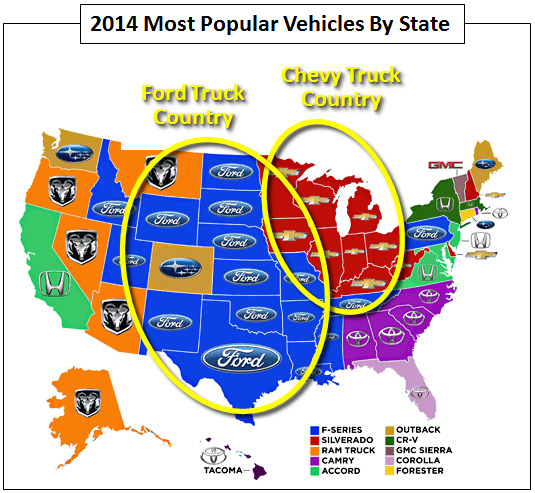A few minutes ago, President Obama’s former “car czar” Steven Rattner tweeted the map below. Marcy Wheeler tweaks him for calling Hondas and Toyotas “imports” even though most of them are made in the US. I’d tweak him for saying the map shows the best-selling “cars” in each state, since it also includes trucks. Trucks aren’t cars.
But that’s enough tweaking. I’m willing to cut people a lot of slack on Twitter. Here’s what I’m curious about. You’ve no doubt heard of the famous “soda line” in America: in New England and the West, most of us call fizzy sweetened drinks soda. In the South, it’s coke. Up north, from Washington to the Ohio Valley, it’s pop.
Apparently we also have a truck line in America. In the Midwest and Mountain states, people buy Ford F-series trucks. In the Great Lakes region, the Chevy Silverado reigns supreme. Out West, we seem to prefer Dodge Rams.
What’s up with that? Is this just a weird coincidence? Or is there some genuine historical reason that different trucks are popular in different regions?
















